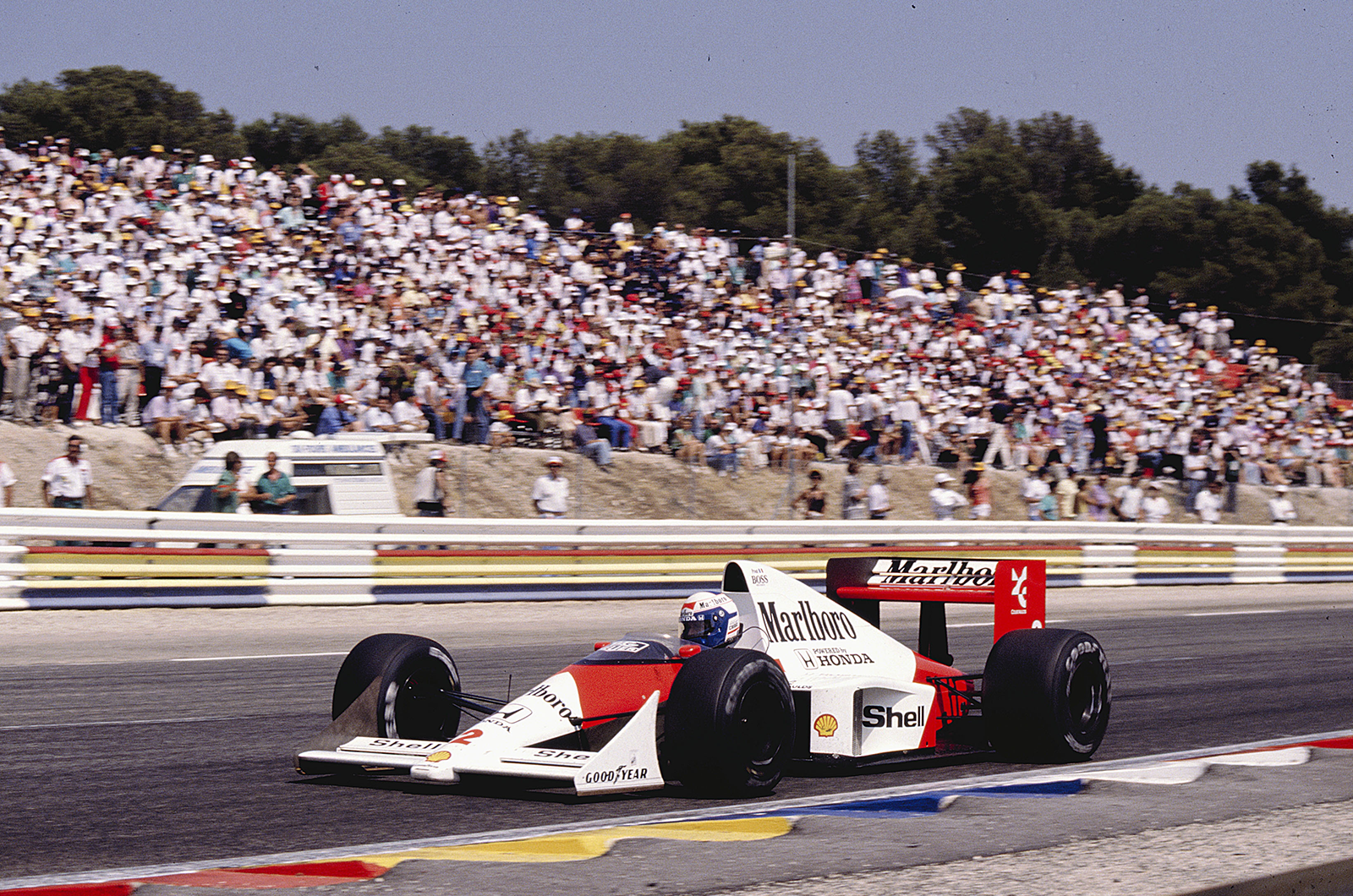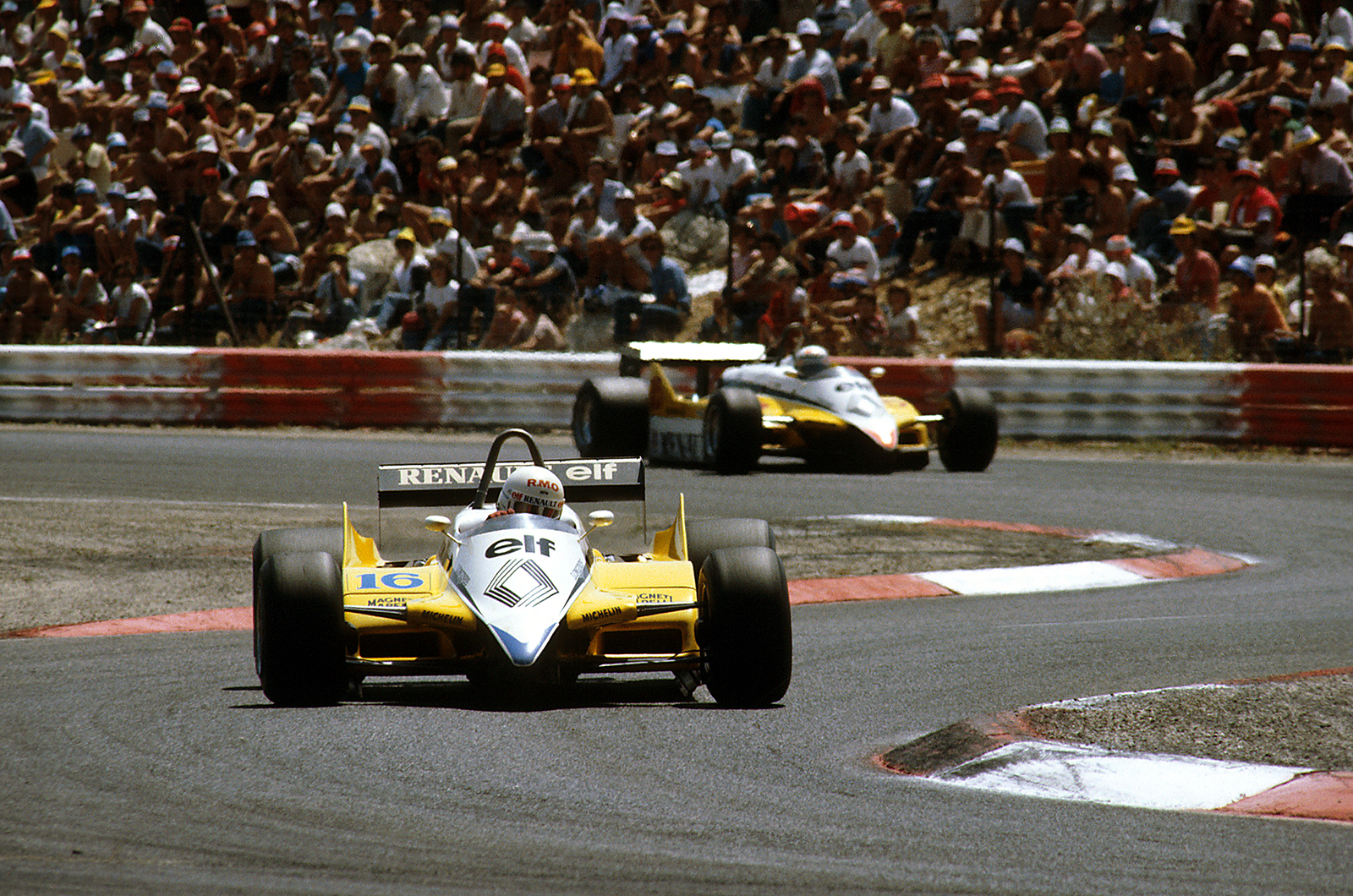
Spend a few minutes online and you’ll find many onboard videos of Ayrton Senna. The ferocity of his technique, particularly while on a qualifying lap, is mesmerising. The characteristic jabbing of the throttle in corners, the other-worldly commitment – it all makes for compulsive viewing.
Take Jerez in 1990, for example. Senna claimed pole position, but alongside him on the front row was his great rival Alain Prost, and onboard footage of the Frenchman’s qualifying lap exists.
The contrast is extreme. Jackie Stewart has always said that you shouldn’t get on the throttle in a corner until you know you won’t have to come off it again, and Prost’s lap exemplifies that.
The Ferrari is never off line, never unsettled, and there’s a sense of flow, of momentum, that belies the fact that Prost’s lap was 0.3 secs faster than teammate Nigel Mansell. No-one has ever made driving a racing car look easier than Prost.

Prost drives the McLaren MP4/5 round Paul Ricard at the 1989 French Grand Prix





